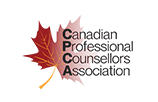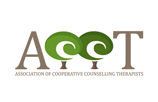
Learning the skills to communicate effectively is essential, particularly within the context of a romantic relationship or marriage. In fact, a breakdown of communication is often the key reason for couples seeking the support of counsellors to repair their relationship (Dempsey, 2021). Over time, a couple’s connection can be eroded due to work pressures, the demands of family life, or a lack of effort on either side (Dempsey, 2021). This can often cause communication to become stilted. In some cases, these misunderstandings can evolve into tension or arguments that hinder communication even further (GoodTherapy, 2019). For couples, relationship counselling is about supporting both people in finding ways to communicate in service of their relationship. As a counsellor, you’ll work with couples to identify difficulties in their communication and propose active solutions.
Understanding Different Communication Styles
Identifying the underlying cause of communication issues is a good place to start when it comes to relationship counselling. Often, couples have different communication styles and a relationship counsellor should recognize these differences before moving forward. The four major communication styles can be categorized as assertive, aggressive, passive, and passive-aggressive (GoodTherapy, 2019). Each of these styles is in turn categorized by specific language, behaviours, and effects. For example, assertive communicators are clear and direct about their feelings, while passive communicators may have difficulty expressing their personal opinions (GoodTherapy, 2019). Likewise, passive-aggressive people may communicate their feelings in an unclear or confusing way (Good Therapy, 2019).
When couples misunderstand one another’s communication styles, it can lead to feelings of insecurity or the tendency to force communication in a way that promotes conflict (The Couples Center, 2021). As an outside observer, a professional with relationship counselling training can help couples to recognize their individual communication styles. In turn, they can encourage them to properly interpret their partner’s behaviour and react in an appropriate way.
Verbal Versus Nonverbal Communication
It’s important to understand that not all communication is spoken. Nonverbal communication includes everything from facial expressions and eye contact to gestures, body language, and posture. According to the research of Albert Mehrabian, verbal communication is more easily misunderstood without nonverbal cues, and when a message is unclear, people pay more attention to nonverbal cues (GoodTherapy, 2019). As such, researchers today favour a holistic understanding of social communication that encompasses both verbal and nonverbal forms (GoodTherapy, 2019).
Recognizing the importance of these faculties will help couples in relationship counselling to realize the unintentional ways in which they have been communicating. In tense situations, individuals tend to misinterpret their partner’s body language and react accordingly (The Couples Center, 2021). As a counsellor, you can help couples understand the impact that their non-verbal communication has and encourage more positive gestures. Couples can use their body language to send a message of connection by turning towards each other and leaning in (Degges-White, 2016). Consistent eye contact can also help couples to give their full attention to one another (Degges-White, 2016).
Explore Active Communication Exercises During Relationship Counselling
During counselling sessions, you can work with clients through a combination of speaking and listening exercises. Couples should practice acting as both the communicator and listener to ensure optimal communication on both ends. Healthy communication begins with “I” statements (Hartle, 2021). These directly communicate the underlying emotion and provide the partner with specific actions they can take to improve the situation (Hartle, 2021). “I” statements also help to take the pressure off the other person; they indicate ownership of one’s feelings and an awareness that each of us is responsible for our own thoughts (Degges-White, 2016).
Counsellors can also introduce active listening exercises into sessions. This involves one person sharing a thought or desire, while the reflective listener repeats back what was said to demonstrate their understanding (Hartle, 2021). By working on the many different avenues of communication, counsellors can equip clients with the knowledge and techniques for productive communication in their relationships.
Are you ready to start your career with relationship counselling courses?
Contact Rhodes Wellness College to learn more about our program.
Works Cited:
The Couples Center (2021). Improve Communication With Couples Counselling. Retrieved from https://www.thecouplescenter.org/couples-counseling-for-improving-communication/
Hartle, A. (2021). 9 Therapist-Recommend Couples Communication Exercises. Retrieved from https://aneverlastinglove.com/couples-communication-exercises/
Dempsey, K. (2021). Four Ways To Improve How You Communicate With Your Partner. Retrieved from https://theawarenesscentre.com/improve-how-you-communicate-with-your-partner/
GoodTherapy (2019). Communication Problems. Retrieved from https://www.goodtherapy.org/learn-about-therapy/issues/communication-issues
Degges-White, S. (2016). 10 Steps to Effective Couples Communication. Retrieved from https://www.psychologytoday.com/ca/blog/lifetime-connections/201605/10-steps-effective-couples-communication











